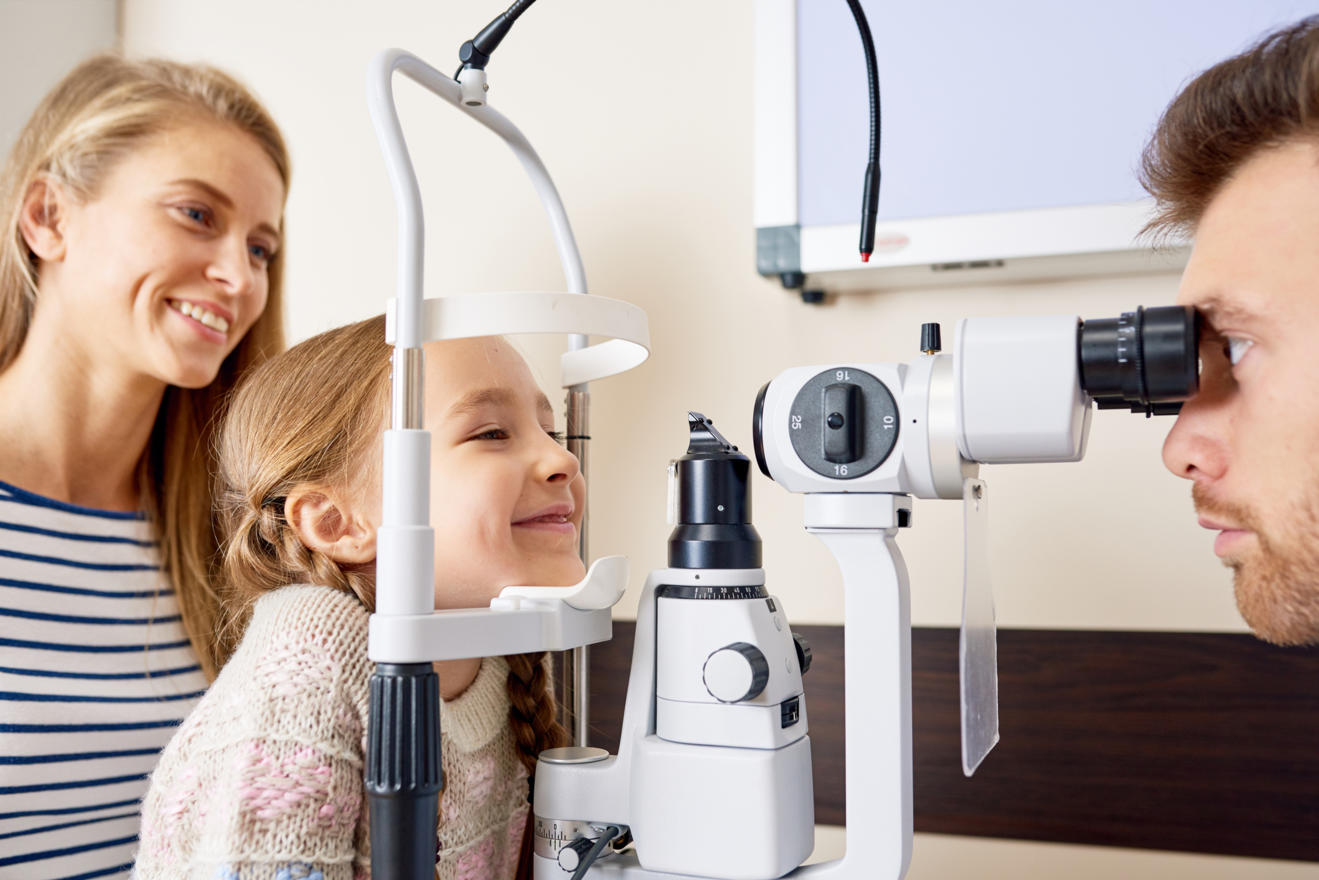Nos dossiers sur la vision
La vision chez l'enfant

Développement de la vision chez l'enfant
Les tranches d'âge décrites ci-dessous correspondent à celles d'un enfant né à terme et doivent être adaptées en cas de naissance prématurée.
À la naissance :
La vision du nouveau-né est floue, il ne voit qu'en noir et blanc.
L'acuité visuelle est faible.
Le réflexe pupillaire est déjà développé avec une sensibilité appropriée à la lumière forte.
De 0 à 3 mois :
Le nouveau-né peut fixer un objet et le suivre.
Entre la 10e et la 16e semaine, la vision binoculaire (c'est-à-dire l'utilisation coordonnée des deux yeux) apparaît. Au cours des 2 premiers mois, il est habituel que le bébé ait un strabisme irrégulier et qu'il détourne les yeux.
Vers 2 mois, le bébé reconnaît le visage de ses parents et distingue les détails, et c'est à cette période qu'il commence à s'intéresser à son environnement.
De 4 à 6 mois :
Il voit désormais toutes les couleurs.
Vers 5 mois, il commence à développer la vision en 3D.
Il distingue les nuances et est capable d'examiner attentivement un objet dans ses mains.
Vers 6 mois, il commence à percevoir les distances.
De 7 à 12 mois :
La perception en 3D continue à se développer.
Vers 8 mois, la couleur des yeux est presque définitive.
Vers 12 mois, l'enfant utilise sa vision qui s'améliore constamment pour se diriger et marcher autour des objets.
De 18 mois à 6 ans :
Vers 18 mois, les enfants apprennent à coordonner les informations visuelles et motrices.
Vers l'âge de 2 ans, il peut se reconnaître dans un miroir.
Vers l'âge de 5 ans, il a une
Translated from : Naître et grandir
Examen de l'œil
Les tests de dépistage recommandés par l'ANAES (Agence Nationale d'Accréditation et d'Evaluation en Santé) pour les troubles oculaires chez les enfants de moins de 6 ans sont les suivants :
Au 8ème jour :
Entretien avec les parents pour identifier les facteurs de risque potentiels.
Examen externe de l'œil (paupière, symétrie des globes oculaires, réflexion de la lumière).
Recherche de la réaction visuelle habituellement présente à la naissance.
4ème mois :
Examen général
À 9 mois :
Entretien avec les parents pour identifier les facteurs de risque potentiels.
Examen externe de l'œil (paupière, symétrie des globes oculaires, réflexion de la lumière).
Examen des premières réactions visuelles
Recherche d'une éventuelle amblyopie
Dépistage du strabisme
Test de Lang (pour tester la vision en relief)
À l'âge vocal :
Examen externe de l'œil (paupière, symétrie des globes oculaires, réflexion de la lumière)
Mesure de l'acuité visuelle (échelles de lettres ou de chiffres)
Test de langage
Visites annuelles à l'école
Visites régulières chez l'ophtalmologiste.
Maladies oculaires chez l'enfant
Certains troubles oculaires peuvent être fréquents chez les enfants et nécessitent une prise en charge rapide afin qu'ils n'affectent pas le développement global de l'enfant. Voici quelques-uns de ces troubles
- l'astigmatisme
- Daltonisme
- l'hypermétropie
- la myopie
Certaines maladies oculaires peuvent être présentes dès l'enfance et doivent être détectées :
- Amblyopie
- le glaucome
- congénital
- Rétinoblastome
- Strabisme

